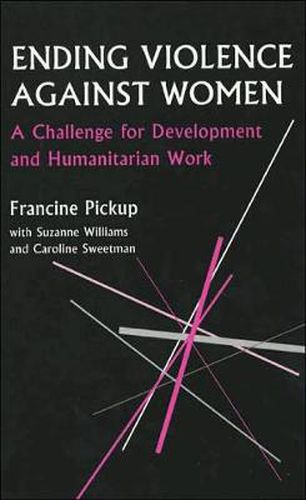Readings Newsletter
Become a Readings Member to make your shopping experience even easier.
Sign in or sign up for free!
You’re not far away from qualifying for FREE standard shipping within Australia
You’ve qualified for FREE standard shipping within Australia
The cart is loading…






Violence, and women’s fear of it, limits women’s choices in virtually all spheres of life. It has long-term, as well as short-term consequences on women’s physical and emotional well-being. It detrimentally affects women’s ability to gain an education, earn a livelihood, develop human relationships and participate in public activities, including development programmes. In this book addressing violence against women, development workers go to the heart of how members of communities relate to one another and how they are able to shape their own lives. The first section of the book examines the many different definitions of violence against woman and offers theories about why it happens in all societies across the world. It discusses the current momentum around the issue and asks why development organizations have been slow to take up the struggle to end violence against woman. The second section focuses on strategies to counter violence against women and support the survivors. Case studies come from times of peace and times of armed conflict. Sections suggest strategies for transforming attitudes and beliefs in different societies that condone such violence; for supporting individual survivors; and to ensure that governments and NGOs fulfil their duty to protect women.
$9.00 standard shipping within Australia
FREE standard shipping within Australia for orders over $100.00
Express & International shipping calculated at checkout
Violence, and women’s fear of it, limits women’s choices in virtually all spheres of life. It has long-term, as well as short-term consequences on women’s physical and emotional well-being. It detrimentally affects women’s ability to gain an education, earn a livelihood, develop human relationships and participate in public activities, including development programmes. In this book addressing violence against women, development workers go to the heart of how members of communities relate to one another and how they are able to shape their own lives. The first section of the book examines the many different definitions of violence against woman and offers theories about why it happens in all societies across the world. It discusses the current momentum around the issue and asks why development organizations have been slow to take up the struggle to end violence against woman. The second section focuses on strategies to counter violence against women and support the survivors. Case studies come from times of peace and times of armed conflict. Sections suggest strategies for transforming attitudes and beliefs in different societies that condone such violence; for supporting individual survivors; and to ensure that governments and NGOs fulfil their duty to protect women.